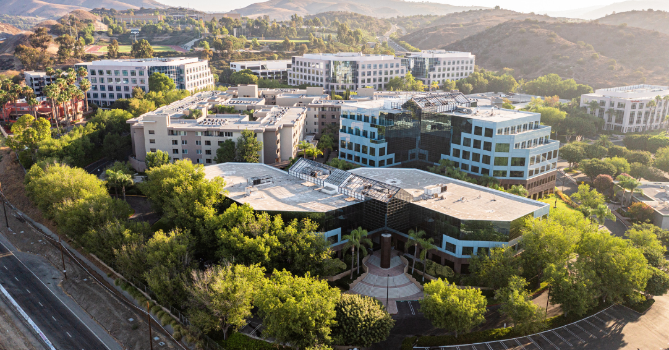
Diving Deep into the Essence of Architectural Significance
Welcome to the dynamic world of architecture, where creativity meets functionality, and innovation shapes our surroundings. In this blog, we'll delve into the captivating realm of architecture, exploring its significance, evolution, and impact on our lives.
Architecture is more than just buildings; it's a reflection of human existence, transcending mere structures to become integral parts of our cultural identity and daily experiences. From towering skyscrapers to humble homes, each architectural creation tells a story, embodying the aspirations and values of its creators and users.
Join us on a journey as we uncover the rich tapestry of architectural wonders that shape our world. From historic landmarks to cutting-edge designs, we'll explore the diverse landscapes of architecture and the endless possibilities it offers for shaping our future.
So, let's embark on this exploration together, as we unravel the mysteries and marvels of architecture in all its dynamic glory.
Architecture holds a profound significance in shaping our environments and influencing our daily experiences. Beyond providing mere shelter, it serves as a tangible expression of human creativity, culture, and aspirations.
At its core, architecture plays a crucial role in defining the way we interact with our surroundings. The design of buildings, streets, and public spaces can either foster a sense of community and connection or contribute to isolation and disconnection. Thoughtfully designed architecture has the power to enhance social interactions, promote well-being, and create inclusive environments where people feel safe and welcomed.
Furthermore, architecture serves as a reflection of our values and beliefs as a society. From iconic landmarks to humble dwellings, each structure embodies the cultural identity and historical context of its place. Through architecture, we preserve our heritage, celebrate our achievements, and envision our aspirations for the future.
Moreover, architecture has a profound impact on the natural environment. Sustainable design practices minimize the ecological footprint of buildings, reducing energy consumption, conserving resources, and mitigating the effects of climate change. By embracing green building techniques and incorporating renewable materials, architects can contribute to the creation of healthier, more resilient communities.

In essence, architecture is more than just the construction of buildings; it is the art of shaping our world. Through thoughtful design and innovation, architects have the power to transform spaces, improve lives, and inspire future generations. As we continue to explore the dynamic realm of architecture, let's celebrate its significance and embrace its potential to create a more sustainable, inclusive, and beautiful world.
Architecture plays a pivotal role in shaping the experiences and perspectives of different generations. From traditional structures to contemporary designs, buildings reflect the values, preferences, and lifestyles of the societies that create them.
For older generations, architecture often evokes a sense of nostalgia and familiarity. Historic landmarks and traditional buildings serve as reminders of the past, preserving cultural heritage and collective memories. These architectural gems provide a connection to history and a sense of continuity across generations.
In contrast, younger generations may gravitate towards modern and innovative architectural styles. They seek spaces that reflect their evolving lifestyles, preferences, and aspirations. Contemporary designs, characterized by sleek lines, open layouts, and sustainable features, resonate with younger individuals who value flexibility, connectivity, and environmental consciousness.
Moreover, architectural design can bridge generational divides by creating spaces that cater to diverse needs and preferences. Mixed-use developments, for example, integrate residential, commercial, and recreational facilities, accommodating the varied lifestyles of different age groups within the same community.
However, generational gaps in architecture also manifest in conflicting design preferences and priorities. While older generations may prioritize durability, craftsmanship, and tradition, younger generations may prioritize innovation, technology, and sustainability. These differing perspectives can lead to tensions and debates within architectural discourse, shaping the built environment in complex ways.
Overall, architecture serves as a lens through which generational gaps are both reflected and challenged. By embracing diversity in design approaches and fostering intergenerational dialogue, architects can create spaces that resonate with people of all ages, fostering inclusivity, understanding, and appreciation across generations. As we navigate the impact of architecture on generational gaps, let's recognize its potential to unite us in our shared quest for meaningful and enriching built environments.
In recent years, the architecture industry has undergone a profound digital transformation, revolutionizing the way buildings are designed, constructed, and experienced. Advancements in digital technologies have empowered architects to explore new possibilities, streamline processes, and enhance collaboration, ultimately shaping the built environment in unprecedented ways.
One significant aspect of this transformation is the adoption of Building Information Modeling (BIM), a digital representation of the physical and functional characteristics of a building. BIM enables architects to create detailed 3D models that encompass every aspect of a project, from its structural elements to its mechanical systems. This comprehensive approach enhances communication, reduces errors, and improves decision-making throughout the design and construction phases.

Furthermore, parametric design tools have revolutionized the way architects conceptualize and iterate their designs. These tools allow architects to create complex, adaptive forms that respond dynamically to various parameters, such as site conditions, environmental factors, and user preferences. By harnessing the power of algorithms and computational design, architects can generate innovative solutions that optimize performance, efficiency, and aesthetics.
Moreover, digital fabrication technologies, such as 3D printing and robotic construction, have expanded the realm of possibilities in architectural fabrication. Architects can now realize intricate geometries and bespoke designs with unprecedented precision and efficiency, blurring the boundaries between digital and physical realms.
Additionally, virtual and augmented reality technologies are transforming the way architects communicate their designs and engage with clients and stakeholders. Immersive visualization tools enable users to experience architectural spaces in virtual environments, providing a more intuitive understanding of design concepts and spatial relationships.
As architecture continues to embrace digital innovation, the boundaries of creativity and collaboration are continually expanding. Architects are leveraging technology to push the boundaries of design, sustainability, and user experience, ushering in a new era of architectural expression and innovation. In this digital age, the possibilities for architectural design are limited only by our imagination and ingenuity.
In today's rapidly evolving landscape, the architectural profession is presented with a wealth of opportunities for growth and innovation. From embracing sustainable practices to leveraging emerging technologies, architects are at the forefront of shaping the built environment and addressing the challenges of the 21st century.
One significant opportunity lies in the realm of sustainability, where architects play a crucial role in designing environmentally responsible buildings and communities. By integrating green building strategies, such as passive design, renewable energy systems, and efficient materials, architects can create structures that minimize their environmental impact and promote long-term sustainability.
Furthermore, the growing demand for urbanization presents architects with ample opportunities to design vibrant, livable cities that accommodate the needs of diverse populations. From mixed-use developments to transit-oriented design, architects are exploring innovative approaches to urban planning that prioritize accessibility, equity, and resilience.
Additionally, the digital revolution has unlocked new avenues for architectural innovation, enabling architects to leverage advanced tools and technologies to enhance design processes and project outcomes. From parametric modeling to virtual reality, architects are harnessing the power of digital tools to streamline workflows, visualize concepts, and communicate ideas more effectively.
Moreover, globalization has expanded the reach of architectural practice, offering architects the opportunity to work on projects around the world and collaborate with diverse teams and cultures. This interconnectedness fosters cross-cultural exchange, fosters innovation, and enriches the profession with fresh perspectives and ideas.
In conclusion, the architectural profession is poised for growth and evolution, driven by a combination of sustainability, urbanization, technology, and globalization. By embracing these opportunities and staying abreast of emerging trends, architects can continue to shape the future of the built environment and create spaces that enrich the lives of people everywhere.
In conclusion, the dynamic realm of architecture offers boundless opportunities for innovation, sustainability, and growth. From addressing generational gaps to embracing digital transformation, architects play a pivotal role in shaping the built environment and responding to the evolving needs of society. By harnessing emerging technologies, embracing sustainable practices, and fostering global collaboration, architects can continue to push the boundaries of design and create spaces that inspire, empower, and enrich the lives of people around the world. As we navigate the challenges and opportunities of the 21st century, architects must remain committed to excellence, creativity, and responsible stewardship of our built environment. Together, we can chart a course towards a more resilient, inclusive, and sustainable future through the transformative power of architecture.